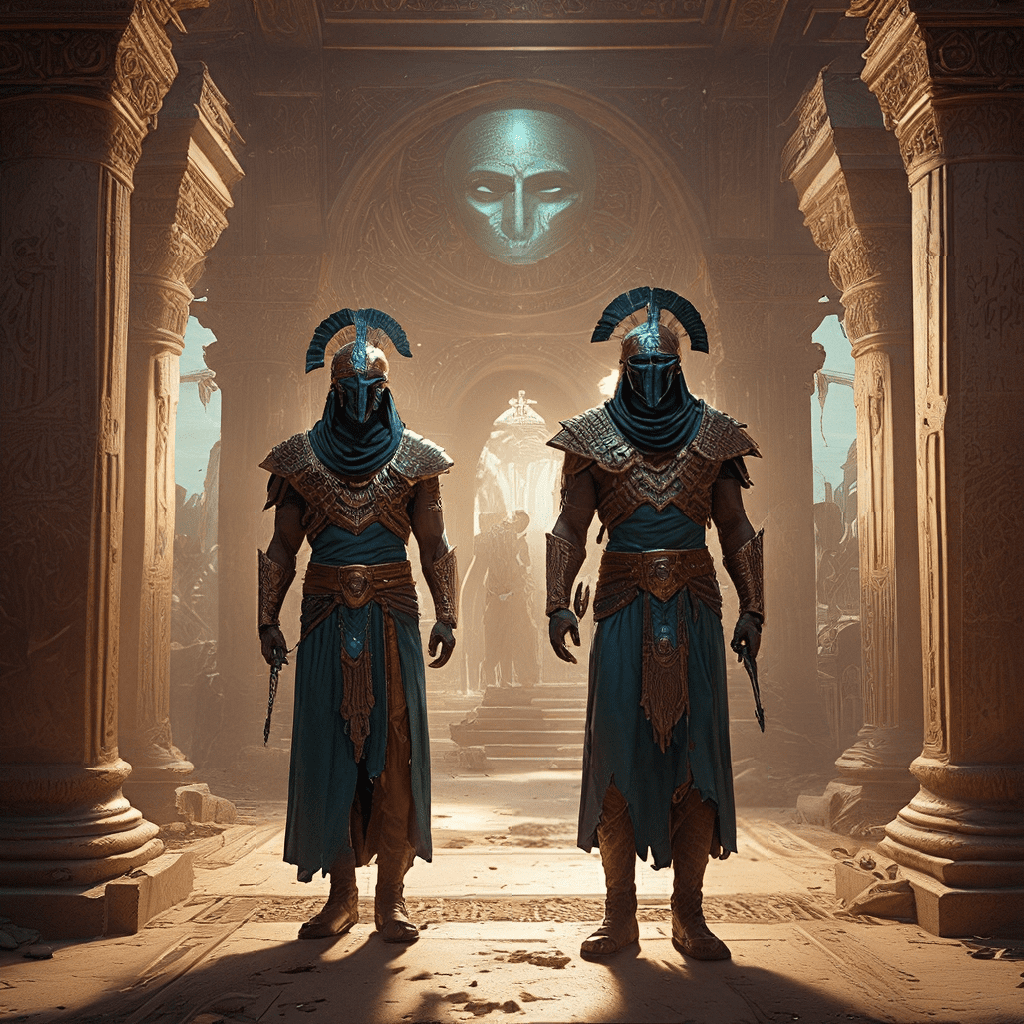The Four Sons of Horus: Guardians of the Dead
1. Introduction: The Importance of the Afterlife
Ancient Egyptians held a profound belief in the afterlife, a journey that continued even after physical death. They envisioned a realm beyond the mortal world, where the deceased would navigate the underworld, known as Duat, and ultimately face judgment in the Hall of Two Truths. A successful passage through this realm would grant eternal life and happiness in the Field of Reeds, a paradise where the sun god Ra resided. However, failure could lead to a grim fate in the underworld.
The afterlife journey was fraught with challenges, requiring the deceased to navigate treacherous landscapes and confront terrifying beings. To ensure a safe passage, the ancient Egyptians relied on divine guidance and protection. Among the most revered guardians were the Four Sons of Horus, powerful deities who played a pivotal role in safeguarding the deceased’s spirit and ensuring its journey to eternity.
2. The Four Sons of Horus: Divine Protectors
The Four Sons of Horus, named Duamutef, Imsety, Qebehsenuef, and Hapy, emerged from the mythology surrounding the god Horus, a powerful falcon deity who represented kingship, the sky, and the sun. These four sons were associated with the four cardinal directions, representing the cosmic order and stability surrounding the deceased. They were also inextricably linked to the preservation of the deceased’s vital organs, ensuring their continued existence in the afterlife.
The Egyptians believed that the soul, known as ka, resided in the heart, and that it was the heart that would be weighed against a feather of truth in the Hall of Two Truths to determine the deceased’s fate. The organs, however, were believed to hold immense spiritual power and were essential for the deceased’s well-being in the afterlife. Consequently, they were carefully removed, preserved, and placed in four canopic jars, each guarded by one of the Four Sons of Horus.
3. Duamutef: Guardian of the Stomach
Duamutef, the jackal-headed god, was entrusted with the vital task of protecting the deceased’s stomach. The stomach held immense significance in Egyptian mythology, representing the body’s ability to digest food and sustain life. Duamutef’s role as the guardian of this organ ensured that the deceased would continue to receive sustenance and nourishment in the afterlife.
The jackal, Duamutef’s animalistic form, was associated with the god Anubis, who presided over the mummification process and guided souls through the underworld. The jackal’s scavenging nature symbolized the constant cycle of life and death, reinforcing the importance of preserving the body’s vital organs for the afterlife journey.
4. Imsety: Guardian of the Liver
Imsety, the human-headed god, was assigned the crucial task of safeguarding the deceased’s liver. In ancient Egyptian beliefs, the liver was seen as the seat of the soul, representing vitality and life force. Imsety’s responsibility for this organ symbolized the preservation of the deceased’s essential life energy, ensuring its continuation in the afterlife.
The human-headed form of Imsety reflected the deceased’s physical embodiment and the importance of preserving the body’s integrity for the soul’s journey. Imsety’s role as the guardian of the liver emphasized the interconnectedness between the physical body and the spiritual essence, ensuring that the deceased’s vitality would transcend the earthly realm.
5. Qebehsenuef: Guardian of the Lungs
Qebehsenuef, the falcon-headed god, was entrusted with the protection of the deceased’s lungs. The lungs were associated with breath and life force, symbolizing the flow of air, vitality, and the ability to communicate and interact with the divine. Qebehsenuef’s role as the guardian of this organ ensured that the deceased would retain the essential breath of life in the afterlife.
The falcon, Qebehsenuef’s animalistic form, was associated with Horus, representing the sky, the sun, and the power of flight. The falcon’s ability to soar above the earth reinforced the notion of transcending earthly limitations and reaching the celestial realms, further emphasizing the importance of preserving the lungs for the afterlife journey.
6. Hapy: Guardian of the Intestines
Hapy, the baboon-headed god, was assigned the vital task of safeguarding the deceased’s intestines. The intestines were associated with digestion and the body’s ability to process and absorb nutrients. Hapy’s role as the guardian of this organ ensured that the deceased’s body would continue to function properly and receive nourishment in the afterlife.
The baboon, Hapy’s animalistic form, was known for its intelligence and agility, symbolizing the vitality and dynamism of the deceased’s spirit. The baboon’s association with the god Thoth, the scribe of the gods, reinforced the importance of preserving the intestines for the deceased’s continued existence and intellectual pursuits in the afterlife.
7. The Canopic Jars: Vessels of Protection
The organs of the deceased were carefully extracted and preserved in four cylindrical vessels known as Canopic jars. These jars were meticulously crafted from alabaster, limestone, or clay and were often decorated with intricate scenes and inscriptions.
Each Canopic jar was topped with a lid depicting the head of one of the Four Sons of Horus, representing the specific organ it contained. The jars were placed within the tomb alongside the deceased, ensuring that the preserved organs would accompany them on their journey through the underworld and into the afterlife.
The Canopic jars served as vessels of protection, safeguarding the deceased’s vital organs and ensuring their spiritual well-being in the afterlife. They symbolized the Egyptians’ unwavering belief in the continuation of life beyond the physical realm, where the soul would journey to eternity with the essential parts of its earthly being.




